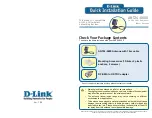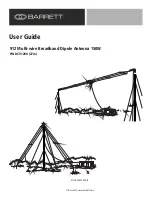
©2004-2013, MobileInternetSatellite.com
StarBand
®
Field Service & Maintenance Bulletins
5
LNB Troubleshooting — SB-0016-1.00
LNBs are used in the VSAT receive path, to provide amplification and frequency
translation from KU-Band (11.7 to 12.2 GHz domestically) to L-Band (950 to 1450
MHz). The outbound signal is transmitted from the LNB output to the InDoor Unit
(IDU) via the VSAT Receive (Rx) IFL.
Symptom
StarBand
®
VSAT Receive Signal Problems, exhibited in reduced or no
receive signal from the LNB. VSAT receive signal levels may be insufficient for the
modem to obtain receive lock, or they may be absent altogether. The antenna should be
peaked and the desired transmit polarization confirmed. Weak signals could indicate the
antenna is not pointed to the right satellite, but could also be associated with wrong
skew angle settings or line-of-sight problems
Recommended Action
If the LNB is believed to be defective, replace it with an available
spare. If the spare LNB resolves the problem, then the old LNB can be returned. If no
spare LNB is available, verify the LNB is receiving a voltage from the IDU using a
Volt-Ohm Meter (VOM). Connect one end of an RG-6 cable to the LNB and the other
end to the LNB connection on the meter. The received voltage at the LNB should read
between 15V and 24V DC. You can also test the LNB for current in milliamps (mA),






































